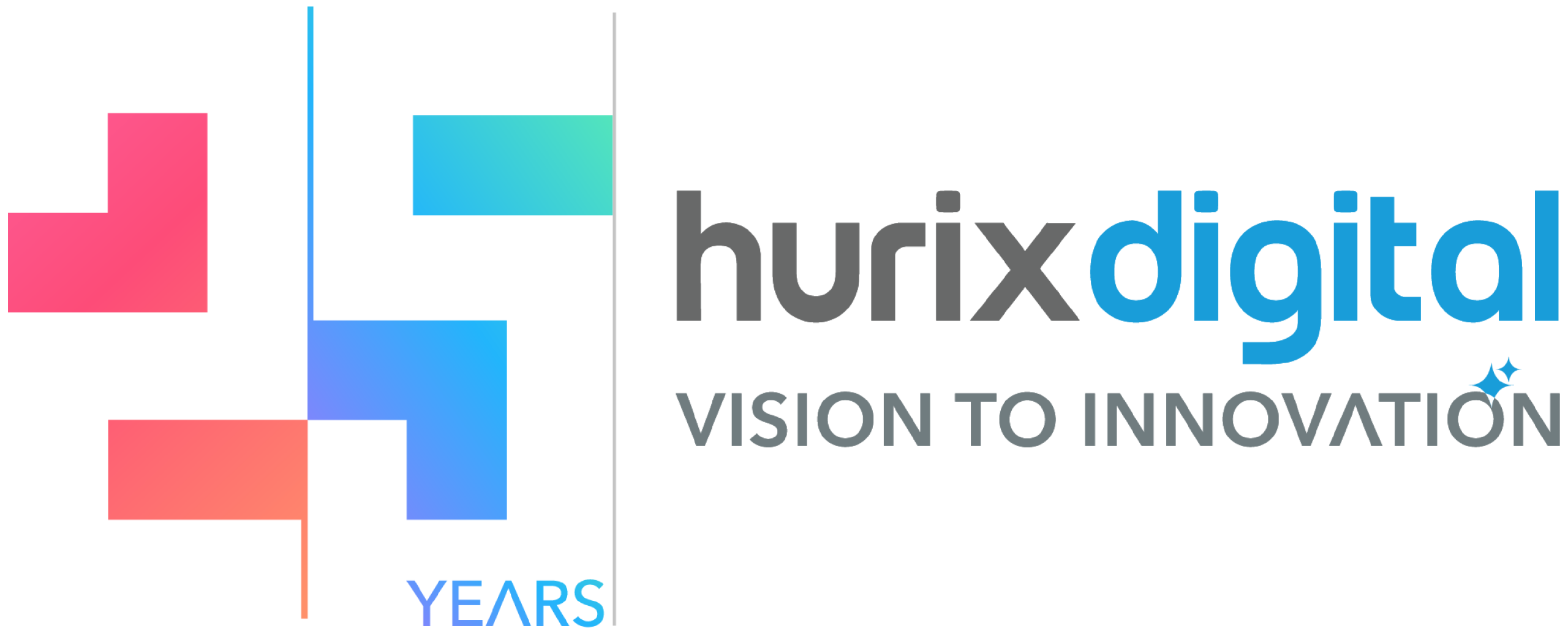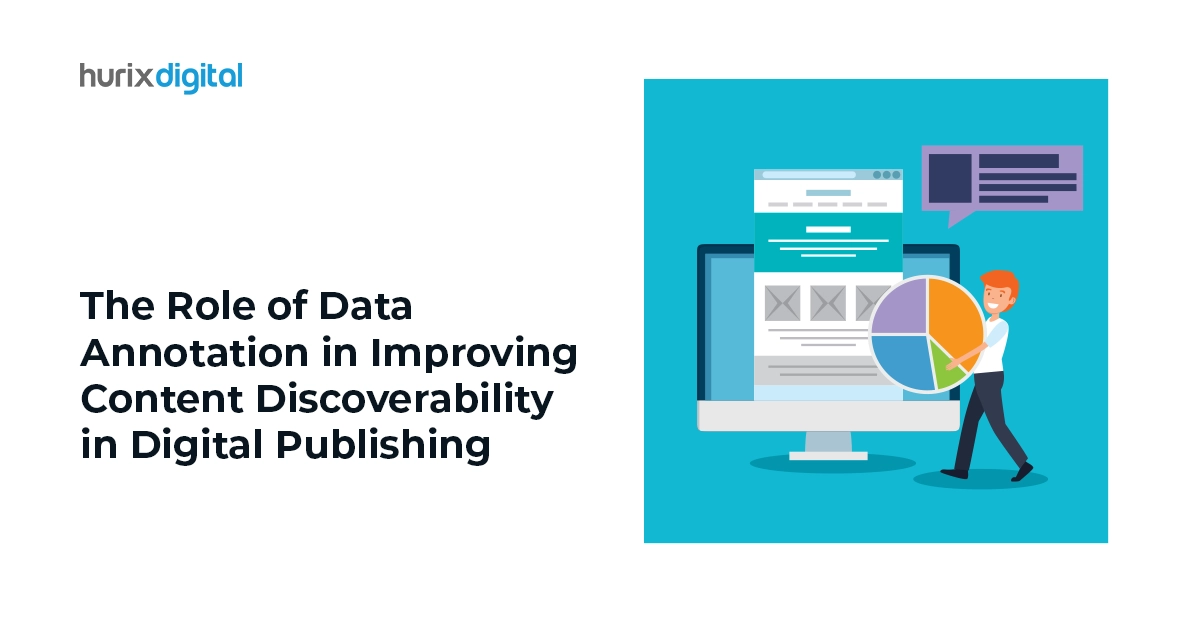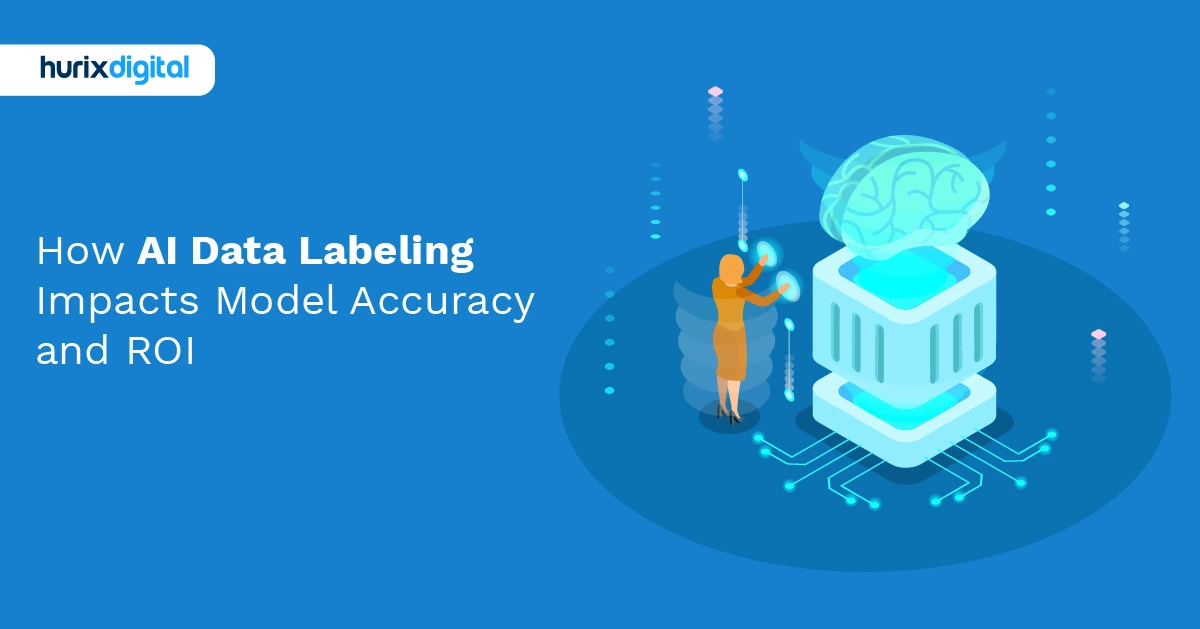
The Hidden Cost of Bad Data Annotation That’s Killing Your AI ROI
Summarize with:
Nobody gets promoted for excellent data annotation. No conference keynotes celebrate labeling achievements. Yet every AI success story stands on the foundations of meticulously annotated data. The industry’s worst-kept secret? Most AI projects fail not because algorithms underperform, but because training data disappoints. Smart executives recognize that annotation excellence determines AI outcomes more than architectural innovations.
Table of Contents:
- What’s the Biggest Bottleneck in Scaling Data Annotation Projects?
- How to Ensure Consistent Annotation Quality Across Diverse Teams?
- What Innovative Techniques Improve Data Annotation Speed and Reduce Costs?
- How Can Synthetic Data Augment or Replace Real-World Annotation Efforts?
- What Are the Key Data Annotation Considerations for Deploying AI Models?
- What Are the Ethical Implications of Biases in Annotated Data?
- How Does Active Learning Enhance Data Annotation Efficiency and Accuracy?
- Which Tools Offer the Best ROI for Enterprise-Level Data Annotation?
- How to Measure the Impact of Data Annotation on Model Performance?
- What’s the Future of Data Annotation With Self-Supervised Learning?
- A Final Word
What’s the Biggest Bottleneck in Scaling Data Annotation Projects?
Humans are the bottleneck, not technology. Scaling annotation resembles scaling restaurants more than scaling software. You can’t just spin up more servers when demand spikes. Real people need to understand tasks, maintain quality, and stay motivated through millions of repetitive labels.
Coordination complexity grows exponentially with team size. Ten annotators need one coordinator. One hundred needs an entire management layer. One thousand requires systems, processes, and infrastructure that dwarf the original AI project. Similarly, knowledge transfer becomes the limiting factor. Every new annotator needs training, context, and ongoing guidance. Written instructions fail to capture edge cases. Video training misses nuanced decisions. With high turnover, you lose intuition, exactly what the best annotators develop through experience.
Tool limitations strangle throughput. Most annotation platforms weren’t designed for true scale. They handle thousands of images but choke on millions. Response times degrade. Interfaces lag. Annotators spend more time waiting than working.
Geographic and cultural misalignment undermines scaling. A Silicon Valley startup hiring annotators in regions with lower labor costs often ends up with regrets rather than profits because annotators unfamiliar with American road signs can’t properly label the given data.
How to Ensure Consistent Annotation Quality Across Diverse Teams?
Consistency challenges multiply when annotators span continents, cultures, and contexts. The same image gets different labels from different people for valid reasons. Creating consistency without destroying nuance requires systems that respect human judgment while enforcing standards.
Clear guidelines sound simple but prove complex. “Label all cars in the image” seems straightforward until someone asks about partially visible cars, toy cars, or car advertisements. Regular calibration sessions align human judgment. Weekly video calls where annotators label the same data and discuss differences reveal hidden assumptions.
Feedback loops must be immediate and specific. Telling someone they made errors last month helps nobody. Real-time quality checks with instant feedback create learning opportunities. One security company built annotation interfaces that flag potential mistakes before submission. “This bounding box seems unusually large. Please verify.” Annotators appreciate guidance that helps them improve rather than criticism after the fact.
Cultural competence requires active cultivation. A global fashion retailer learned this when Indian annotators labeled “kurtas” as “shirts” because their guidelines only included Western clothing categories. Now they maintain region-specific guidelines and involve local experts in guideline creation. What looks like an inconsistency often reflects incomplete instructions rather than annotator error.
Gamification works but requires finesse. Leaderboards showing accuracy scores motivate some annotators but discourage others. One company switched from individual rankings to team achievements. Quality improved, and turnover dropped. They celebrate “consistency streaks” where teams maintain quality standards for consecutive days. Competition became collaboration.
Technology helps, but it can’t take the place of human oversight. Quality checks powered by AI catch obvious mistakes like empty comments, categories clicked by error, and statistical outliers. However, minor problems with consistency need to be looked at by a person.
What Innovative Techniques Improve Data Annotation Speed and Reduce Costs?
Innovation in annotation often means working smarter. The breakthrough techniques share a philosophy: minimize human effort on repetitive tasks while maximizing human judgment where it matters most.
Pre-annotation changes the game when done right. Instead of starting from scratch, annotators refine AI-generated labels. Then, hierarchical annotation workflows distribute complexity efficiently. Not every decision requires expert judgment.
Collaborative annotation leverages crowd wisdom. Instead of one person labeling each item, multiple annotators provide inputs that get aggregated. This approach seems expensive until you factor in quality improvements and reduced review needs.
Active learning creates virtuous cycles. Models identify which examples they’re most uncertain about. Humans annotate those specific cases. Models retrain and improve. The cycle continues with ever-decreasing human effort.
In many cases, synthetic data creation skips the time-consuming labeling step. Instead of taking and tagging millions of pictures, developers can use code to make 3D scenes with perfect labels.
How Can Synthetic Data Augment or Replace Real-World Annotation Efforts?
Synthetic data is a little like tofu: it can be plain by itself but taste fantastic if you season it right. The real skill is working out where and how to splash that sauce.
Start with what’s hard to capture in real life. Rare defects in semiconductor wafers, bears wandering onto airport tarmacs, or a child’s finger blocking a smartphone camera. These kinds of events show up once in a million frames. A gaming engine can generate ten thousand variations overnight, each labeled perfectly because the pixels know their ground truth.
Synthetic data promises infinite, perfectly labeled examples. The reality proves more nuanced. Like lab-grown diamonds, synthetic data can match or exceed natural quality for specific purposes while falling short in others. Understanding the boundaries determines success.
The simulation gap challenges every synthetic approach. Virtual worlds differ from reality in subtle ways that fool humans but confuse AI. Domain randomization bridges these simulation gaps through an overwhelming variety. Instead of perfecting virtual reality, randomize lighting, textures, angles, and colors. Models learn invariant features rather than simulation artifacts.
Privacy concerns make synthetic data attractive beyond economics. Real medical images require consent, anonymization, and regulatory compliance. Synthetic medical images based on statistical models preserve privacy while enabling research.
The hybrid future strategically combines synthetic and real data. Synthetic data is used for volume, edge cases, and dangerous scenarios, while real data is used for validation, fine-tuning, and capturing real-world messiness.
What Are the Key Data Annotation Considerations for Deploying AI Models?
Production deployment surfaces the annotation assumptions that development masked. The controlled environment of model training gives way to chaotic real-world conditions. Smart teams anticipate these challenges during annotation rather than discovering them through production failures.
Edge case annotation determines production robustness. Development datasets skew toward common scenarios. Production encounters the weird, unexpected, and seemingly impossible. A restaurant chain’s food recognition system can work perfectly on clean plates, but it often fails when customers mix foods.
Geographic diversity in annotations prevents regional failures. A voice assistant trained on American English annotations fails in China, India, and Alabama. Accent variation exceeds the model’s training experience.
Adversarial annotation hardens models against attacks. Standard annotation assumes good-faith inputs. Production faces malicious users. A content moderation system trained on normal posts failed when users discovered Unicode tricks and creative misspellings. They now employ “red team” annotators who try to fool the system. These adversarial examples, properly labeled, create robust models. Moreover, performance monitoring requires an annotation of ground truth. You can’t improve what you can’t measure. Production data needs selective annotation to establish accuracy baselines.
Regulatory compliance shapes annotation requirements. Healthcare, finance, and autonomous systems face strict requirements about data handling, bias testing, and decision explainability. Annotations must support these needs from the start.
What Are the Ethical Implications of Biases in Annotated Data?
Biased annotations create biased AI, but the path from human prejudice to algorithmic discrimination proves surprisingly indirect. Well-meaning annotators following flawed guidelines produce systematic unfairness. Understanding how bias enters annotations helps organizations build fairer AI systems.
Selection bias starts before annotation begins. Choosing what to annotate shapes what models learn. A hiring AI trained on “successful employee” annotations often reflects historical hiring biases. Women and minorities tend to appear less in the training data because past discrimination limited their presence. In such cases, the annotations will be accurate, but the selection process will be biased.
Annotator demographics influence labeling decisions. Homogeneous annotation teams produce homogeneous perspectives. Cultural assumptions are embedded through guidelines. “Professional appearance” means different things in Silicon Valley versus Wall Street versus Dalal Street in Mumbai.
Aggregation methods can amplify or reduce bias. Simple majority voting reinforces dominant group perspectives. Weighted aggregation considering annotator confidence and expertise produces more nuanced results.
Transparency enables accountability. Secret annotation guidelines hide bias from scrutiny. One of our clients publishes its annotation guidelines publicly, inviting community feedback. This openness often helps them in uncovering unconscious biases in their definitions.
How Does Active Learning Enhance Data Annotation Efficiency and Accuracy?
Active learning flips traditional annotation economics. Instead of labeling everything and hoping models learn, it identifies exactly what examples models need to improve. Despite its apparent simplicity, this approach requires sophisticated orchestration to work.
Query strategies determine active learning effectiveness. Beyond simple uncertainty, sophisticated approaches consider diversity, representativeness, and expected model change. That’s why satellite imagery projects generally make use of multiple strategies: uncertainty identifies hard examples, diversity ensures coverage, and impact prediction prioritizes high-value annotations. This multi-strategy approach outperforms any single method.
Cold start problems challenge active learning adoption. Models need initial training data to identify what they don’t know. Random sampling works but wastes effort. Smart organizations use transfer learning from related domains or expert-designed seed sets.
Batch selection balances efficiency with effectiveness. Theoretical active learning selects one example at a time. Practical annotation requires batches for efficiency. However, batch selection can reduce diversity if all uncertain examples are similar. Successful implementations use diversity-aware batch selection. A defect detection system selects batches that maintain uncertainty while maximizing visual variety. Annotators stay engaged and models learn broadly.
Human-in-the-loop dynamics affect active learning outcomes. Annotations are different from robots because annotations don’t get bored labeling the same examples over and over.
Production active learning extends beyond initial training. Models deployed in production encounter new scenarios requiring annotation, which smart systems automatically identify. A customer service chatbot flags conversations where confidence drops below thresholds, which get annotated and incorporated into continuous training. The model improves through use rather than degrading. Active learning transforms from a development technique to an operational capability.
Which Tools Offer the Best ROI for Enterprise-Level Data Annotation?
When choosing enterprise annotation tools, how well they fit into the ecosystem, how scalable they are, and how much they cost to own are more important than their features. The best annotation tool for a startup might not work for a large enterprise, and vice versa.
Build versus buy calculations rarely favor building. The annotation tool graveyard contains countless internal projects that seemed simple initially. “We just need to label bounding boxes” evolves into workflow management, quality control, annotator management, and model integration. Remember that platform extensibility trumps feature completeness. No tool perfectly matches every enterprise’s needs. The winners provide APIs, plugins, and integration points.
Annotator experience drives long-term costs. Fancy features mean nothing if annotators struggle with interfaces. Slow tools, confusing workflows, or frequent crashes destroy productivity and morale. Enterprise tools differ from consumer tools because they have security and compliance features. Companies that work in highly regulated fields have to meet strict standards, such as HIPAA compliance, SOC 2 certification, and options for where to store data.
How to Measure the Impact of Data Annotation on Model Performance?
Model performance and annotation quality are clearly related, but difficult to quantify. Organizations that master this measurement get on the path of continuous improvement. Those that don’t waste millions on annotations that don’t improve outcomes.
Baseline establishment requires patience. You can’t measure improvement without knowing starting points. Many organizations skip baseline measurement in their rush to production. Quality metrics must align with business outcomes. Pixel-perfect segmentation masks might not improve customer experience. Incremental measurement reveals diminishing returns. Plot model performance against annotation volume. The curve will flatten eventually. A
Long-term tracking catches degradation. Models trained on historical annotations decay as the world changes. A news categorization system shows a performance decline as new topics emerge. That’s why smart news organizations carefully track performance monthly and have a system in place that triggers re-annotation when degradation exceeds certain thresholds.
What’s the Future of Data Annotation With Self-Supervised Learning?
Self-supervised learning promises to reduce or eliminate annotation needs. The reality proves more complex. Like fusion power, annotation-free AI remains perpetually just over the horizon. Understanding realistic timelines and limitations helps organizations plan strategically.
Current self-supervised techniques work well in constrained domains. Language models learn from unstructured text without labels. Image models extract features from unlabeled pictures. But moving from general understanding to specific tasks still requires annotation. The annotation shift moves from volume to precision. Instead of annotating millions of examples, organizations annotate thousands of high-quality instances for fine-tuning. Prompt engineering emerges as a lightweight annotation. Rather than labeling training data, engineers craft prompts that elicit desired behaviors from foundation models.
Human expertise becomes more valuable, not less. As models handle routine annotation, human judgment focuses on edge cases, quality control, and strategic decisions. Expert annotators evolve into “AI trainers” who understand both domain knowledge and model behavior. One of our healthcare clients employs fewer annotators but pays them more, recognizing their evolved role. The future needs fewer annotators but better ones.
A Final Word
Data annotation determines whether your AI initiatives deliver real value or join most of those who fail. The difference between success and expensive disappointment often comes down to choosing the right partner who understands that annotation excellence requires more than just labeling tools.
At Hurix Digital, we’ve helped enterprises navigate every challenge discussed here—from scaling annotation teams across continents to implementing active learning systems that continuously improve model performance. Connect with our experts to discover how we can accelerate your AI initiatives while reducing costs and ensuring ethical, unbiased outcomes.
Summarize with:

Vice President – Content Transformation at HurixDigital, based in Chennai. With nearly 20 years in digital content, he leads large-scale transformation and accessibility initiatives. A frequent presenter (e.g., London Book Fair 2025), Gokulnath drives AI-powered publishing solutions and inclusive content strategies for global clients
 A Space for Thoughtful
A Space for Thoughtful 



